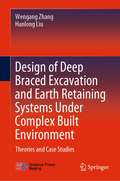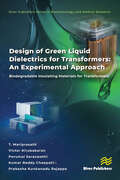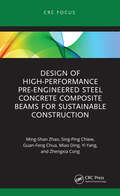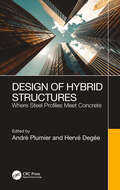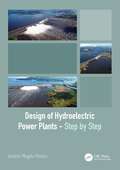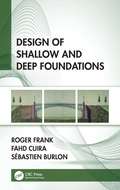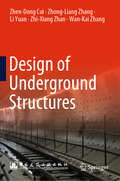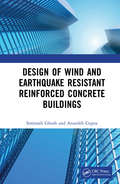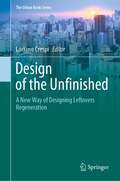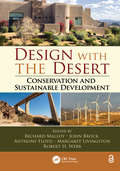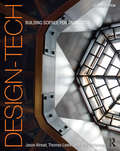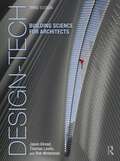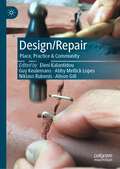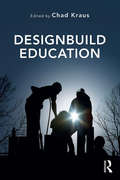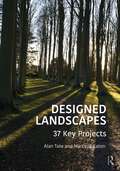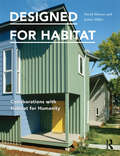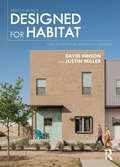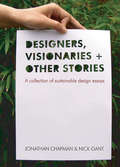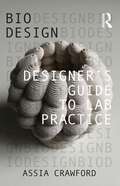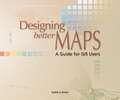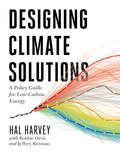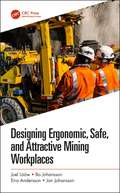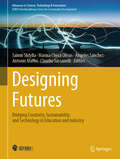- Table View
- List View
Design of Deep Braced Excavation and Earth Retaining Systems Under Complex Built Environment: Theories and Case Studies
by Wengang Zhang Hanlong LiuThis book presents basic design theories and principles and provides detailed analysis for excavation failure cases based on the author's research experience, aiming to provide a comprehensive picture of the subject matter. It focuses on the basal heave stability analysis, the apparent earth pressure as well as the strut force determination, the retaining wall deflection, the ground settlement, the protection measures such as jet grouting slabs or piles, case reports, back analysis methodology. From the very basic to the most advanced, it tries to attain theoretical rigorousness and consistency. On the other hand, this book also tries to cope with design practice, implemented by the recent publications from the authors. Students, researchers, and design engineers working in the field of civil engineering could benefit from this book.
Design of Green Liquid Dielectrics for Transformers: Biodegradable Insulating Materials for Transformers (River Publishers Series in Biotechnology and Medical Research)
by T. Mariprasath Victor Kirubakaran Perumal Saraswathi Reddy Kumar Cheepati Prakasha Kunkanadu RajappaThis book provides in-depth information about the latest trends in transformer insulation design. This practical guide is prepared from a hands-on perspective, offering readers valuable insights into the trends in liquid dielectrics for transformer applications. Chapter 1 covers the necessity of alternate liquid dielectrics for transformers. Chapter 2 delves into the historical development of liquid dielectrics for transformer applications, drawing insights from reputable publications. It also explores the impact of nanoparticles on ester oil characteristics. In Chapter 3, the significance of spectroscopy analysis for investigating the ageing effect on both cellulosic insulating materials and oil samples is discussed. Chapter 4 describes material preparations followed by experimental analysis, estimating the degradation rate of solid and liquid dielectrics using spectroscopies. Chapter 5 discusses the importance of condition monitoring for transformers and its historical methods. Chapter 6 explores the methodology for hot spot indication and its application for assessing the transformer's condition. It covers real-time case studies as well. In Chapter 7, the book investigates the application of artificial intelligence in transformer insulation systems, leveraging machine learning algorithms to predict transformer insulation.
Design of High-performance Pre-engineered Steel Concrete Composite Beams for Sustainable Construction
by Sing-Ping Chiew Yi Yang Ming-Shan Zhao Guan-Feng Chua Miao Ding Zhengxia CongThis accessible and practical shortform book details the properties and advantages of high-performance pre-engineered steel-concrete composite beams (HPCBs) for improving the sustainability of construction techniques. It also explains the analysis methods for testing HPCB systems.The authors describe a new HPCB system that has been developed to reduce the input of raw materials and embodied CO2 commonly associated with heavily loaded and long-spanned industrial buildings (which predominately comprise reinforced concrete) and improve the sustainability of the construction process. They provide several resources throughout to facilitate adoption by professionals.Design equations derived from Eurocode 4 approach for ultimate limit state and serviceability limit state and worked examples are included throughout. The authors discuss the feasibility for both materials and the full-scale beams and CO2 reduction methods, including use of recycled concrete aggregate, ground granulated blast-furnace and silica fume to replace natural coarseaggregates and Ordinary Portland Cement. Guidance for testing HPCBs—including setup, test procedure and data collection and interpretation—is also given. The authors also elaborate on recommendations for finite element analysis for HPCBs. Design examples are appended to illustrate typical current practice using a 12 × 12 m grid floor with live load of 15 kPa. Various considerations for different parameters such as fire resistance are discussed. Finally, the authors present a case study of a recently completed industrial building in Singapore to quantify the benefits of using HPCBs over reinforced concrete and conventional composite construction.Structural engineering professionals, whose work relates to long-span and heavy-loading industrial or commercial buildings, will benefit from the detailed guidance and focus on practical applications provided throughout this book. Post-graduate students of advanced steel and composite structures will also benefit from these descriptions.
Design of Hybrid Structures: Where Steel Profiles Meet Concrete
by André Plumier and Hervé DegéeWell-designed hybrid structures can combine the different performance strengths materials. This guide focuses on design approaches for concrete structures reinforced in an unconventional way by steel profiles. It explains force transfer mechanisms of steel profiles and oncrete interfaces, and an analysis of the characteristics of hybrid structures, including slendercomponents. Several types of hybrid designs are addressed: walls and columns with several embedded steel profiles, connections strengthened by steel profiles between steel and composite or reinforced concrete components, including the specific case of shear keys connecting deep beams or flat slabs to columns. The transition zones in partly reinforced concrete and partly composite columns are also covered. Design of Hybrid Structures draws on the European SMARTCOCO research project of experimentation and numerical modelling, giving practical guidance for designers and introducing the subject for researchers and graduate students.
Design of Hydroelectric Power Plants – Step by Step
by Geraldo Magela PereiraThe design of a hydroelectric plant, along with an installation of transformation of potential energy of water into electricity, is an activity that is not standardized. Each new project is an interesting engineering challenge, and teams need to work in different conditions of each site, integrated to design a functional, economical and environmentally sustainable project. The development of a project, here understood as the plant itself, the reservoir, the maneuver substation and the associated transmission line, is a multidisciplinary activity that encompasses areas of civil engineering, geology, mechanical and electrical engineering, environmental engineering, economic engineering, construction and assembly, and the engineering of operation and maintenance of civil works and electromechanical equipment. The book is organized to facilitate the performance of professional life of the new generations of engineers who will join the Electric Sector, or in other sectors that demand the knowledge regarding hydraulic structures. The book is a simple manual providing the practical step-by-step procedure for designing hydroelectric plants, including legislation, with a general view of the project.
Design of Shallow and Deep Foundations
by Roger Frank Fahd Cuira Sébastien BurlonDesign of Shallow and Deep Foundations introduces the concept of limit state calculations, before focusing on shallow and deep foundations. The limit state combinations of actions are examined, and practical calculation models of the bearing capacity and of the settlement are presented, particularly from the results of Ménard pressuremeter tests and cone penetration tests. Attention is also given to the use of numerical methods, which has been developed over the past twenty years. It provides an overview of various elements of ground-structure interaction that are pertinent for a refined design of both shallow and deep foundations, such as allowable displacements of structures, and ground-structure couplings. This guide will be useful to practising engineers and experts in design offices, contracting companies and administrations, as well as students and researchers in civil engineering. Though its focus is generally on the French practice, it is more widely applicable to design based on, or generally in line with, Eurocode 7, with references to BS ENs. Roger Frank is an Honorary Professor at Ecole Nationale des Ponts et Chaussées (ENPC). From 1998 to 2004, he chaired the committee on Eurocode 7 on Geotechnical design. Fahd Cuira is the Scientific Director of Terrasol (Setec group), France. Since 2018, he has been in charge of the course on the design of geotechnical structures at ENPC. Sébastien Burlon is a Project Director at Terrasol (Setec group), France. He is involved in the evolution of Eurocode 7 and teaches several geotechnical courses, especially at ENPC.
Design of Thermal Oxidation Systems for Volatile Organic Compounds
by David A LewandowskiControlling the emission of volatile organic compounds (VOC) became a very prominent environmental issue with the passage of the 1990 Clean Air Act Amendments, and will continue to be an environmental priority through the next decade. No single technology has played as important a role in the control of VOC emissions as thermal oxidation. It has the ability to destroy VOCs in a one-step process that produces innocuous by-products.Design of Thermal Oxidation Systems for Volatile Organic Compounds provides all the information needed for developing a thermal oxidation design in a single reference. It covers design, operation, and maintenance as well as the principles behind the classification of volatile organic compounds as hazardous waste. The author explores the primary purpose of thermal oxidizers and discusses their limitations.The book provides:practical, complete, and concise thermal oxidizer design principlesan outline of state-of-the-art design principlesa practical rather than theoretical approachreal industrial examples in each chapterWith the new regulations that affect VOC emissions, engineers from such diverse fields as oil refining, chemical distillation and separation processes, and pharmaceutical industries will need to design and implement thermal oxidation systems. Design of Thermal Oxidation Systems for Volatile Organic Compounds provides a reference to the entire design process, from conceptualization to operation and maintenance.
Design of Underground Structures
by Li Yuan Zhen-Dong Cui Zhong-Liang Zhang Zhi-Xiang Zhan Wan-Kai ZhangThis book provides a general review of the literature on underground structures, combined with new specifications, engineering case studies, and numerical simulations based on the authors’ research. It focuses on the basic concepts, theories, and methods of the design of underground structures. After an introduction, it covers various topics, such as elastic foundation beam theory and numerical analysis methods for underground structures, as well as the design of shallow underground structures, diaphragm wall structures, shield tunnel structures, caisson structures, immersed tube structures, and integral tunnel structures. It also includes tables for calculating elastic foundation beam. This book is intended for senior undergraduate and graduate students majoring in urban underground space engineering, building engineering, highway engineering, railway engineering, bridge and tunnel engineering, water conservancy and hydropower engineering.
Design of Wind and Earthquake Resistant Reinforced Concrete Buildings
by Somnath Ghosh Arundeb GuptaDesign of Wind and Earthquake Resistant Reinforced Concrete Buildings explains wind and seismic design issues of RCC buildings in brief and provides design examples based on recommendations of latest IS codes essential for industrial design. Intricate issues of RCC design are discussed which are supplemented by real-life examples. Guidelines are presented for evaluating the acceptability of wind-induced motions of tall buildings. Design methodologies for structures to deform well beyond their elastic limits, which is essential under seismic excitation, have been discussed in detail. Comparative discussion including typical design examples using recent British, Euro and American codes is also included. Features: Explains wind and earthquake resistant design issues, balancing theoretical aspects and design implications, in detail Discusses issues for designing the wind and earthquake resistant RCC structures Provides comprehensive understanding, analysis, design and detailing of the structures Includes a detailed discussion on IS code related to wind and earthquake resistant design and its comparison with Euro, British and American codes Contains architectural drawings and structural drawings along with STAAD Pro input and output files The book is aimed at researchers, professionals, graduate students in wind and earthquake engineering, design of RCC structures, modelling and analysis of structures, civil/infrastructure engineering.
Design of the Unfinished: A New Way of Designing Leftovers Regeneration (The Urban Book Series)
by Luciano CrespiThe book aims to provide city administrators and planners with a tool to accompany them in experimenting with the regeneration of no longer used parts of the built heritage, called leftovers, by adopting an innovative approach. A new and radically different form of project, with the task of proposing a new aesthetic code and a style of thought aimed at creating shelters for nomads of the third millennium.In the design field, the 21st century will be destined to measure itself against temporariness and precariousness, also in terms of aesthetic practices. Based on this hypothesis, the text identifies the design of the unfinished as the perspective for attributing to the leftovers a character, which is representative of the conditions of the just begun century. Through a transdisciplinary, exhibition-like and reversible approach, the elements of degradation of the existing work are welcomed in the project as a "gift", to be translated into a syntax aimed at giving form and meaning to the internal and external environments, with the inclusion of "additional components".
Design with the Desert: Conservation and Sustainable Development
by Richard MalloyTypical development in the American Southwest often resulted in scraping the desert lands of the ancient living landscape, to be replaced with one that is human-made and dependent on a large consumption of energy and natural resources. This transdisciplinary book explores the natural and built environment of this desert region and introduces development tools for shaping its future in a more sustainable way. It offers valuable insights to help promote ecological balance between nature and the built environment in the American Southwest-and in other ecologically fragile regions around the world.
Design-Tech: Building Science for Architects
by Thomas Leslie Jason Alread Robert WhiteheadDesign-Tech is an indispensable, holistic approach to architectural technology that shows you in hundreds of drawings and tables the why as well as the how of building science, providing you with a comprehensive overview. In this expanded edition, measurements and examples are listed in both metric and imperial units to reflect the global reality of architectural practice. The authors also address digital fabrication, construction documentation, ultra-high-rise structures, and zoning codes. And there's more in-depth coverage of structural design and greater emphasis on environmental forces. Numerous case studies demonstrate real-world design implications for each topic, so that you can integrate technical material with design sensibilities. Short chapters explain each topic from first principles in easy-to-reference formats, focusing on what you need to know both at the drawing board and in future discussions with engineers, contractors, and consultants. This new edition incorporates material from continuing curricular experimentation in the SCI-TECH sequence at Iowa State University, which has been recognized with awards and funding from the American Institute of Architects, the U.S. Green Building Council, and the National Council of Architectural Registration Boards.
Design-Tech: Building Science for Architects
by Jason Alread Thomas Leslie Rob WhiteheadThe third edition of Design-Tech provides an indispensable, holistic resource for integrating building technologies into critically designed, performance-based architectural projects. The book’s format follows the developmental stages of a typical architectural project; it provides a step-by-step process for addressing and integrating building sciences from first principles of human comfort, materials, structures, and environmental systems to advanced construction systems and measures of building performance. Short chapters incorporate easy-to-understand information with hundreds of useful illustrations, tables, and references that explain the why as well as the how of building science. The content focuses on what designers need to know in the studio to create sustainably designed, integrated buildings, and it prepares them for future discussions with engineers, contractors, and consultants.The updated format builds a coherent framework for integrated project design studio development, necessary for all contemporary accredited schools of architecture. Chapters build upon critical project information from schematics toward technical integration. New chapters emphasize performance-based design strategies including sustainable design values, critical schematic planning, enhanced building envelope design strategies, and advanced performance systems. Enhanced visualization of schematic design strategies helps explain sustainable design standards, code compliance, and structural schematics, and throughout, the third edition focuses on contemporary issues such as embodied carbon, heavy timber construction, life cycle costs, and long-term performance.This will be a must-read for all architecture students looking for an accessible guide to building science.
Design/Repair: Place, Practice & Community
by Alison Gill Eleni Kalantidou Guy Keulemans Abby Mellick Lopes Niklavs RubenisThis collection of essays sheds light on repair as a disposition to material culture and a practice rooted in diverse sociocultural experiences. It provides an in-depth exploration of how repair manifests itself through the different lenses of governance, grassroots activism, transformative design and community-led initiatives. Most importantly, the chapters demonstrate how place-based approaches can reveal blueprints for social impact in circumstances of growing environmental and social precariousness.
Designbuild Education
by Chad KrausDesignbuild Education adopts the intellectual framework of American Pragmatism, which is a theory of action, to investigate architects’ compelling urge to build and how that manifests in collegiate designbuild programs. Organized into four themes—people, poetics, process, and practice—the book brings together new essays by some of today’s most well-known designbuild educators, including Andrew Freear from Rural Studio and Dan Rockhill from Studio 804, to shed light on the theoretical dimensions of their practice and work. Illustrated with over 100 black and white images.
Designed Landscapes: 37 Key Projects
by Alan Tate Marcella EatonDesigned Landscapes is a case-by-case study of 37 significant, existing works of landscape design worldwide, largely constructed since the Renaissance. Being an informative and easy-to-read reference volume for practitioners and students alike, it presents key precedents in landscape architecture using site plans and recent photographs to showcase each project. Organised and presented in 12 sections based on project type, each project is examined based on date, previous site condition, designer(s), design intentions, current composition, unique features, ownership and management, and comparable projects. Each chapter offers an insightful critique of the featured projects. Written by the authors of Great City Parks, the book posits that these carefully selected key projects have maintained their status throughout the ages because they express values and design intentions that continue to inform the practice of the landscape architecture in the present day. The book concludes with a ten-point summary of lessons for professional practice gleaned from the studies. Including a wide range of case studies from countries including many in western Europe, the United States, Canada, India, Japan and China, and lavishly illustrated with over 200 full-colour images, the book is a must-have volume for anyone interested in the history and current practice of landscape architecture.
Designed for Habitat: Collaborations with Habitat for Humanity
by Justin Miller David HinsonIf you're looking for ways to give back to your community, then this book, the first to profile thirteen projects designed and built by architects and Habitat for Humanity, will help. Detailed plans, sections, and photographs show you how these projects came about, the strategies used by each team to approach the design and construction process, and the obstacles they overcame to realize a successful outcome. The lessons and insights, presented here will aid you, whether you're an architect, architecture student, Habitat affiliate leader, or an affordable housing advocate. Located all across the United States, these projects represent the full spectrum of Habitat for Humanity affiliates, from large urban affiliates to small rural programs. These cases illustrate a broad range of innovative approaches to energy performance, alternative construction strategies, and responses to site context. And each house demonstrates that design quality need not fall victim to the rigorous imperatives of cost, delivery, and financing.
Designed for Habitat: New Directions for Habitat for Humanity
by Justin Miller David HinsonDesigned for Habitat: New Directions for Habitat for Humanity presents 12 new projects designed and built via collaborations between architects and Habitat for Humanity®. The ways in which we think about affordable housing are being challenged by designers and not-for-profit housing advocates such as Habitat for Humanity and its affiliates. The projects chronicled in this book consider home affordability through the lens of monthly homeownership expenses, energy efficiency and residential energy use, and issues of designed resilience to natural events ranging from aging and accessibility concerns to natural disasters and climate change. New to this edition, the projects reflect new approaches to building scale, construction technology, energy and affordability, and design and context. Illustrated with over 100 color images, the case studies include detailed plans and photographs to show how these projects came about, the strategies used by each team to approach the design and construction process, and the obstacles they overcame to realize a successful outcome. The lessons and insights presented will be a valuable resource, whether you’re an architect, an architecture student, a Habitat affiliate leader, or an affordable housing advocate.
Designers Visionaries and Other Stories: A Collection of Sustainable Design Essays
by Jonathan ChapmanDesigners, Visionaries and Other Stories unpacks the complex and crucial debates surrounding sustainable design to deliver a compelling manifesto for change, at a time of looming ecological crisis, mounting environmental legislation and limited progress. This is a book about sustainable design, by the leading sustainable design thinkers, for creative practitioners, professionals, students and academics. This challenging work provides the reader with a rich resource of future visions, critical propositions, creative ideas and design strategies for working towards a sustainable tomorrow, today. The authors boldly present alternative understandings of sustainable design, to curate a challenging, sometimes uncomfortable and always provocative, collection of essays by some of the worlds leading sustainable design thinkers. The result is an impacting and polemical anthology that reinvigorates the culture of critique that, in previous years, has empowered design with the qualities of social, environmental and economic revolution.
Designer’s Guide to Lab Practice (Bio Design)
by Assia CrawfordThis book explores the growing field of bio-design through interdisciplinary creative practice. The volume illustrates a range of experimental working techniques while offering a foundational understanding of lab practice principles. The book highlights the myriad of opportunities presented by microorganisms that have reshaped the planet and made it habitable. The book provides an account of the creation of living materials from the point of view of an architectural design practitioner. The transition from traditional design practice to laboratory investigation is captured, highlighting strategies of creating partnerships across a range of fields. The book demonstrates laboratory methods and ways of investigating the development of living materials and celebrates the growing body of practitioners, scientists, activists and anthropologists who are reimagining new strategies for addressing contemporary environmental challenges. Designer's Guide to Lab Practice looks at ways in which integrating living components with needs of their own would not only help offset the environmental impact that we have on our planet but could also create a closer relationship with nature. It is a working manual as well as a guide to emerging practitioners seeking to transition into a field that is yet to be defined and that offers the promise of a new era of human habitat making as a direct response to the looming ecological crisis.
Designing Better Maps: A Guide For GIS Users
by Cynthia A. BrewerDescribing how to build balanced map layouts suited to varied mapping goals, this guide focuses on export options that suit different media and can be edited in other applications. The wide range of text characteristics needed for expert map design as well as how to improve map readability with type effects such as character spacing, leading, callouts, shadows, and halos is detailed. Tips are included for using font tools in the Windows operating system, such as creating special characters in map text, as is information on using text characteristics to indicate feature locations, categories, and hierarchies on maps. How cartographic conventions guide placement of labels for point, line, and area features are also explained.
Designing Climate Solutions: A Policy Guide for Low-Carbon Energy
by Hal Harvey Robbie Orvis Jeffrey RissmanWith the effects of climate change already upon us, the need to cut global greenhouse gas emissions is nothing less than urgent. It's a daunting challenge, but the technologies and strategies to meet it exist today. A small set of energy policies, designed and implemented well, can put us on the path to a low carbon future. Energy systems are large and complex, so energy policy must be focused and cost-effective. One-size-fits-all approaches simply won't get the job done. Policymakers need a clear, comprehensive resource that outlines the energy policies that will have the biggest impact on our climate future, anddescribes how to design these policies well.Designing Climate Solutions:A Policy Guide for Low-Carbon Energy is the first such guide, bringing together the latest research and analysis around low carbon energy solutions. Written by Hal Harvey, CEO of the policy firm Energy Innovation, with Robbie Orvis and Jeffrey Rissman of Energy Innovation, Designing Climate Solutions is an accessible resource on lowering carbon emissions for policymakers, activists, philanthropists, and others in the climate and energy community. In Part I, the authors deliver a roadmap for understanding which countries, sectors, and sources produce the greatest amount of greenhouse gas emissions, and give readers the tools to select and design efficient policies for each of these sectors. In Part II, they break down each type of policy, from renewable portfolio standards to carbon pricing, offering key design principles and case studies where each policy has been implemented successfully.We don't need to wait for new technologies or strategies to create a low carbon future—and we can't afford to. Designing Climate Solutions gives professionals the tools they need to select, design, and implement the policies that can put us on the path to a livable climate future.
Designing Ergonomic, Safe, and Attractive Mining Workplaces
by Jan Johansson Joel Lööw Bo Johansson Eira AnderssonThe mining industry has experienced important improvements with regard to its safety record and work environment. But there is still room for further improvement and the mining industry now faces the challenge of securing a future workforce: The current workforce is aging, and mining work increasingly requires a more qualified workforce. Designing Ergonomic, Safe, and Attractive Mining Workplaces seeks to give an understanding of what must be considered in the design of mining workplaces. By reviewing and discussing the historic and current development of the mining industry as well as problems related to the safety, ergonomics, and attractiveness of mining workplaces, it demonstrates that the challenges facing the mining industry often need to be solved on a case-to-case basis. The processes through which these issues are managed are of significant importance. To facilitate a proactive approach, the book covers the principles of systematic work environment management, together with examples of methods for risk management and work environment monitoring. It introduces a systematic and iterative design and planning method for the mining industry. This method acknowledges that all relevant stakeholders must be able to influence the design of ergonomic, safe, and attractive mining workplaces. Features Takes a holistic and sociotechnical approach to current and future problems of the mining industry, which normally are dealt with in isolation or through technology Reviews historic, current, and future issues in the mining industry with regards to workplace attractiveness, health, safety, mechanization, automation, and work organization Provides several examples of these issues and attempts to address them (successfully and unsuccessfully) Covers the principles of systematic work environment management together with examples of methods for risk management and work environment monitoring for pro-actively dealing with work environment issues Introduces a systematic and iterative design and planning method for the mining industry that aims to avoid problems of traditional planning approaches and increase stakeholder and employee participation
Designing Futures: Bridging Creativity, Sustainability, and Technology in Education and Industry (Advances in Science, Technology & Innovation)
by Angeles Sánchez Marina Checa Olivas Saimir Shtylla Antonio Maffei Claudio SassanelliThis book is a compelling exploration into the integration of sustainability with creativity and technology. It offers a cohesive journey from theoretical insights into practical applications across creative disciplines, education, and industries. This book serves as a crucial guide for those looking to navigate the challenges of modern sustainability through innovative solutions. By showcasing examples from 3D printing in education to sustainable practices in creative industries and the preservation of cultural heritage through digital innovation, it highlights the transformative power of creativity in fostering a sustainable future. Aimed at academics, professionals, and students, this book is an invitation to engage, innovate, and contribute to the sustainability discourse in the creative sectors.
Designing Futures: Speculation, Critique, Innovation
by Benedikt Groß Eileen MandirThe ability to imagine different possible futures and the will to influence the course of events are deeply human. These ideas about the future can also determine which of the many possible futures will become reality. Designing futures therefore means that by creating and communicating potential scenarios, you can shape the futures of your fellow human beings and influence the course of events. Design is becoming more strategic as a discipline, moving away from 'making things beautiful' to 'thinking creatively'. This book provides designers with the methods and tools they need to develop discussable and tangible scenarios. It also outlines ways for creative people, activists and decision-makers in politics, science and the wider society to imagine more desirable futures.- With over 500 illustrations.- Case studies from across the world.- Foreword by Riel Miller, senior fellow at the École des Ponts Business School, the University of Stavanger and the University of New Brunswick.
